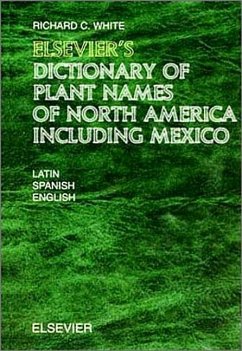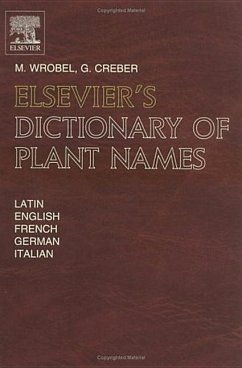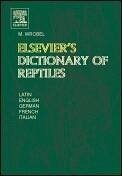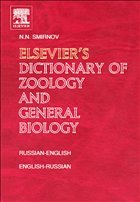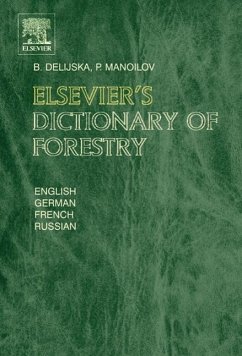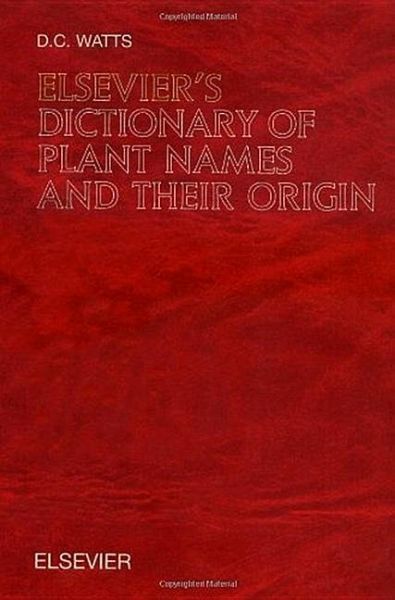
Elsevier's Dictionary of Plant Names and Their Origin
In English
Versandkostenfrei!
Versandfertig in 6-10 Tagen
228,99 €
inkl. MwSt.

PAYBACK Punkte
114 °P sammeln!
The dictionary contains about 30,000 vernacular and literary English names of plants (plus a few American), both wild and cultivated, with their botanical name and a brief account of the names' meaning if known. It was conceived as part of the author's wider interest in plant and tree lore, and ethnobotanical studies. Knowledge of plant names can give insight into largely forgotten beliefs. Why for example is, or was, the common red poppy known as "Blind Man"? An old superstition has it that if the poppy were put to the eyes it would cause blindness. Such names were probably the result of some...
The dictionary contains about 30,000 vernacular and literary English names of plants (plus a few American), both wild and cultivated, with their botanical name and a brief account of the names' meaning if known. It was conceived as part of the author's wider interest in plant and tree lore, and ethnobotanical studies.
Knowledge of plant names can give insight into largely forgotten beliefs. Why for example is, or was, the common red poppy known as "Blind Man"? An old superstition has it that if the poppy were put to the eyes it would cause blindness. Such names were probably the result of some taboo against picking the plant. Similarly, other names were likely to have been applied as a result of a country mother's warning to her children against eating poisonous berries. For the warning carries more weight when the name given to the berry reinforces the warning. Many such plants or fruits may be ascribed to the devil, Devil's Berries for Deadly Nightshade is an example.
Names may also be purely descriptive, and can also serve to explain the meaning of the botanical name. Beauty-Berry is an example: it is the name given to the American shrub that belongs to the genus Callicarpa, which is made up of two Greek words that mean beauty and berry.
Literary, or "book" names, have also been included in this dictionary, as being a very important part of the whole. Many of them provide links in the transmission of words through the ages. Thor's Beard, for example, is a book name for "houseleek", and has never been used in the dialect. But it highlights the legend that houseleek is a lightning plant, and by reverse logic is a preserver from fire.
Knowledge of plant names can give insight into largely forgotten beliefs. Why for example is, or was, the common red poppy known as "Blind Man"? An old superstition has it that if the poppy were put to the eyes it would cause blindness. Such names were probably the result of some taboo against picking the plant. Similarly, other names were likely to have been applied as a result of a country mother's warning to her children against eating poisonous berries. For the warning carries more weight when the name given to the berry reinforces the warning. Many such plants or fruits may be ascribed to the devil, Devil's Berries for Deadly Nightshade is an example.
Names may also be purely descriptive, and can also serve to explain the meaning of the botanical name. Beauty-Berry is an example: it is the name given to the American shrub that belongs to the genus Callicarpa, which is made up of two Greek words that mean beauty and berry.
Literary, or "book" names, have also been included in this dictionary, as being a very important part of the whole. Many of them provide links in the transmission of words through the ages. Thor's Beard, for example, is a book name for "houseleek", and has never been used in the dialect. But it highlights the legend that houseleek is a lightning plant, and by reverse logic is a preserver from fire.



